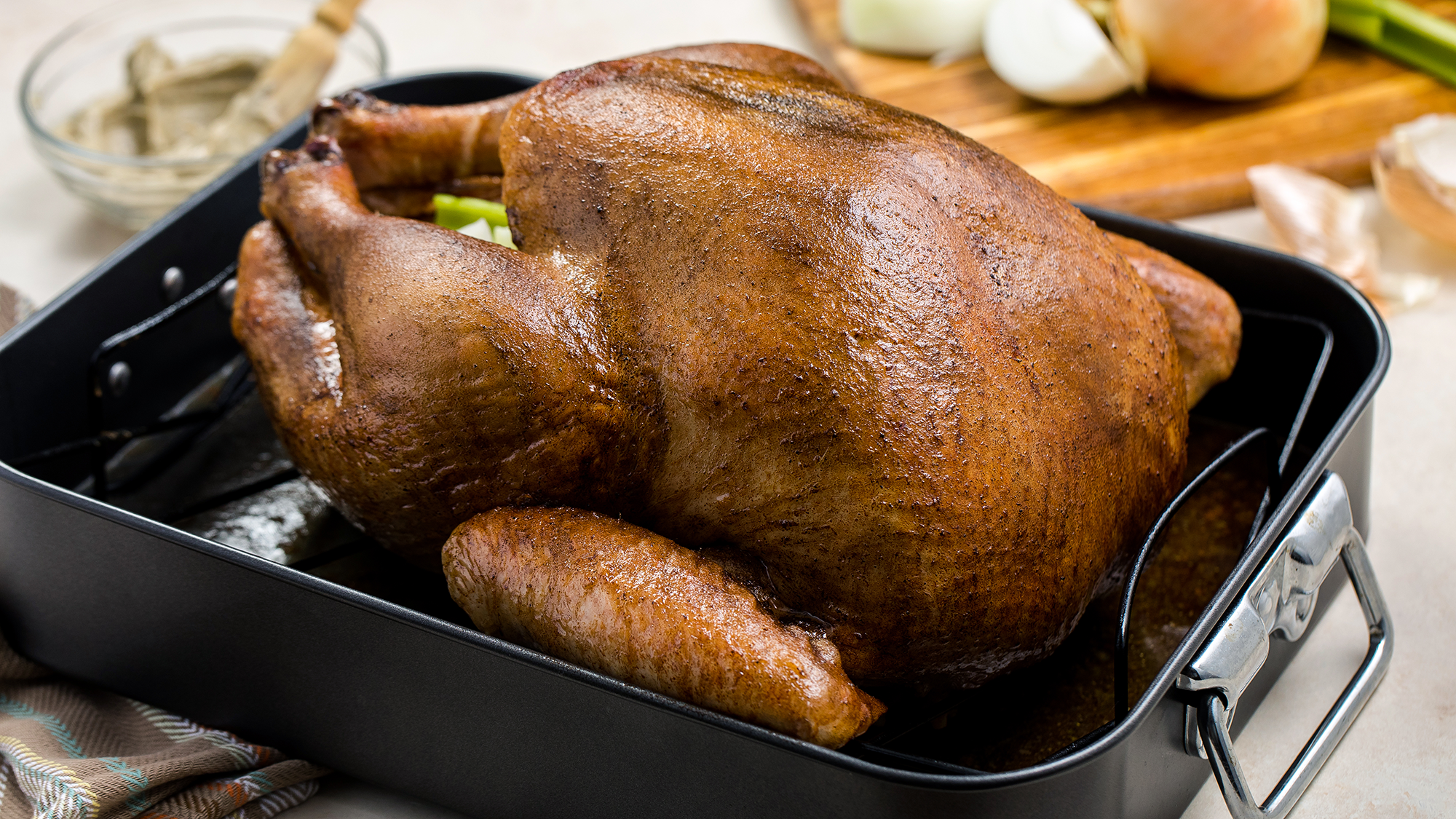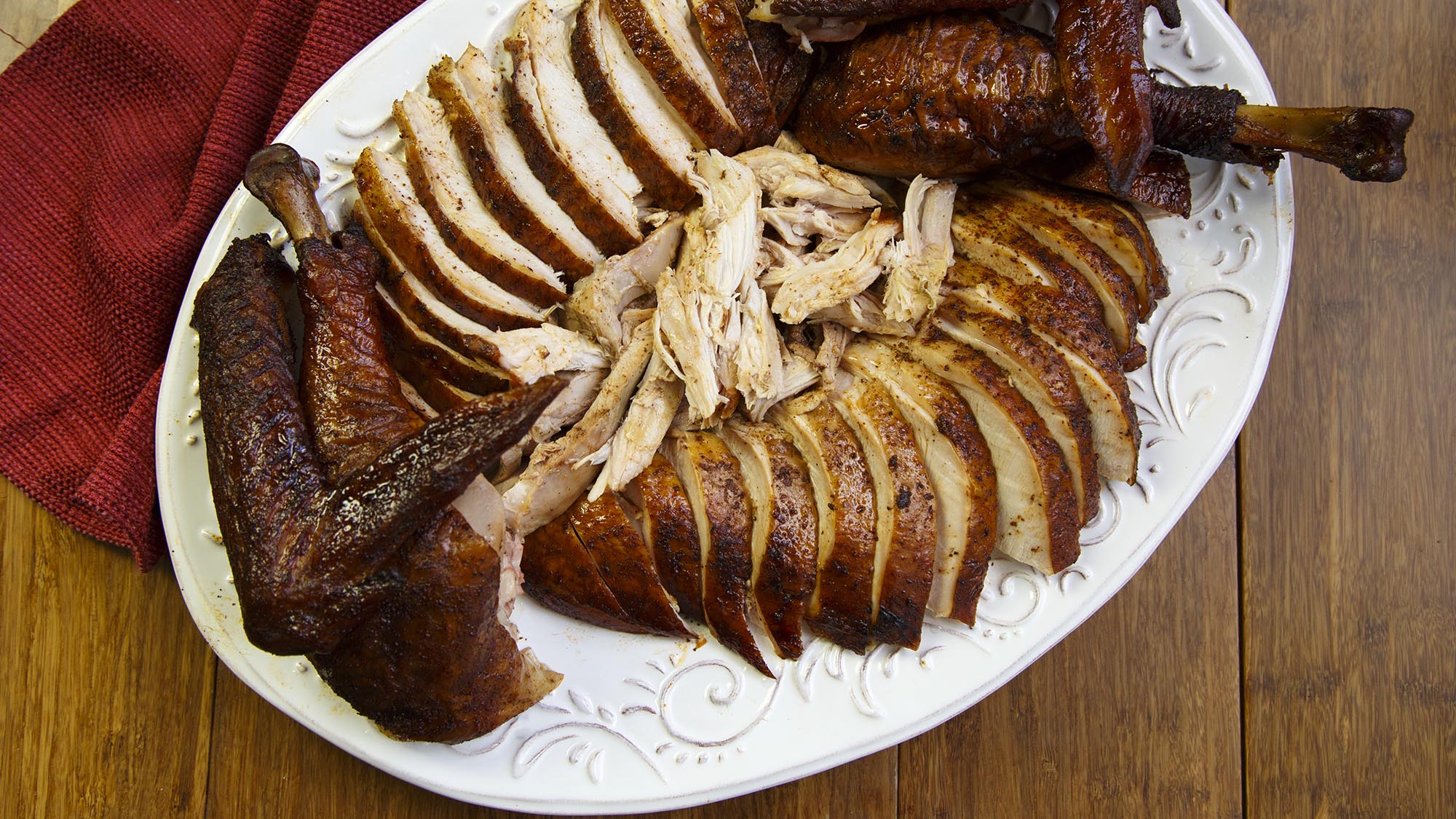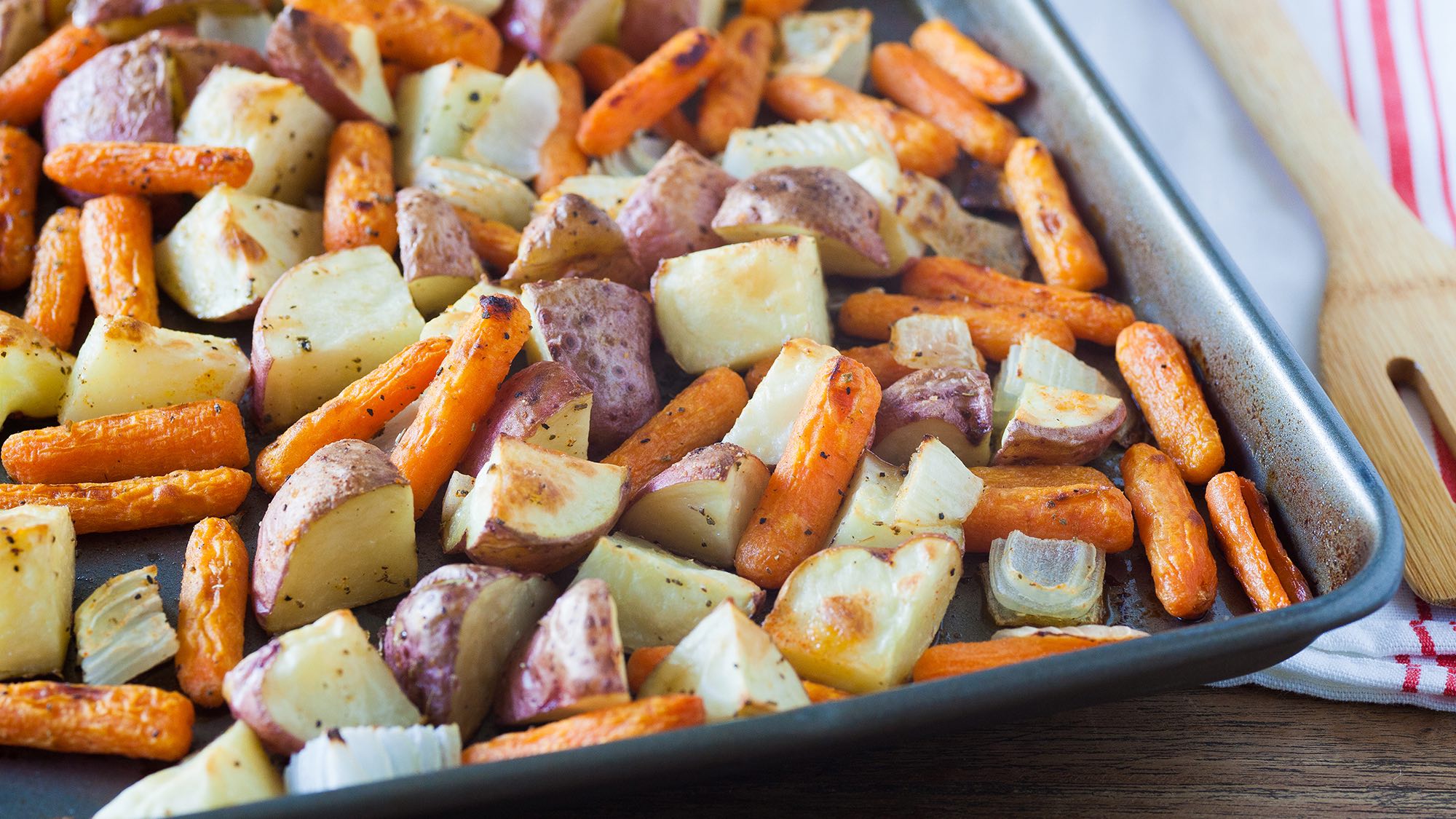What could possibly go wrong? No roasting pan, raw turkey, frozen turkey, no oven space. Here's how the pros deal with kitchen disasters on Thanksgiving day.
Even for a seasoned cook, pulling together a Thanksgiving meal can be an anxiety-provoking nightmare. Sure, things can go wrong. (Trust, me, I’ve had my share!) Maybe you don’t have the right cooking equipment for Thanksgiving dinner or your turkey is still frozen the morning of Thanksgiving. But cooking mistakes—even big disasters—don’t have to ruin your holiday meal. There’s usually an easy solution that can save dinner. I’ve collected five of the most common troublemakers—and surefire fixes to ensure your Thanksgiving celebration runs as smooth as… gravy.
Photo: McCormick
1. No Roasting Pan
It’s Thanksgiving morning, you don’t have a fancy roasting pan and the kitchen store is closed. Don’t freak—you have options. Most conventional grocery stores are open the morning of Thanksgiving. Your best bet is to grab an aluminum roaster from the kitchen aisle. Better yet, grab two. A double layer will retain the heat better than a single pan. No grocery stores? No worries. You (or your neighbor) probably have a broiler pan (the small rimmed pan with a grate on top). Take the grate off and voilà, you have a small roasting pan. If your bird hangs over the pan, make sure to place a rack covered in foil below your turkey to catch any drippings. Turkey fat hitting a hot oven can smoke up your kitchen in just minutes—or worse, start a fire. If your turkey is too large for a broiler pan, use a rimmed baking sheet.
2. Cooking Time Is Up and Your Turkey Is Raw
It’s almost dinnertime and when you go to check the turkey it still isn’t done. Turkey is cooked only when it reaches an internal temperature of 165 degrees. You can fix it: cover the whole bird with tin foil to prevent the skin from burning before the meat has finished cooking and go ahead and crank up the oven heat. (But don’t go over 475°F. Higher than that and it may burn.) Keep in mind, if you’re cooking in an oven with the heat source on the bottom, any bits in the roasting pan may burn when you increase the temperature, so add a cup or two of water, turkey stock or wine to the pan to avoid any burning.
Photo: McCormick
3. You Misjudged Cooking Time and Your Turkey is Done Too Early
If your turkey is done early, things can get a little complicated, but it’s not the end of the world. If it’s done around an hour early, let it rest uncovered for about 20 to 30 minutes. Then cover your turkey with some foil and a thick towel or blanket to keep it warm. By letting it first rest you release the initial heat. That way it won’t overcook once it’s covered. If your turkey is done several hours before your meal, let it rest. Then carve off the breast meat, the legs and the thighs and arrange them on a serving platter and cover with foil. Just before you’re ready to serve, reheat the platter in the oven (about 20 minutes at 350°F). It may not be the most dazzling way to serve a turkey, but your meat will be juicy and moist, and you won’t have to worry about food safety. FYI: Knowing how much your turkey weighs is key to getting the timing right. A good rule of thumb is 15 minutes per pound in a 325°F oven.
4. You Don’t Have Enough Oven Space
If you can’t get everything prepared at the same time, some of your dishes may cool before everything is ready. This is possibly the most challenging part of Thanksgiving. The oven is occupied and so are the burners on your stove. Here are a few ways to keep stuff warm: Got a slow cooker? Put it to work. Make mashed potatoes early, put them in your slow cooker on the warm setting and walk away. They’ll stay heated for a couple of hours with no tending involved. Another tactic is to take advantage of the "turkey resting period" (the time between when the turkey comes out of the oven and when you carve, usually about 20 to 30 minutes). If your side dishes are just sitting around getting cold, tuck them into your toasty (turned-off) oven while the turkey rests. And remember, don’t stress. The food doesn’t have to be piping hot—that’s what gravy is for!
Photo: McCormick
5. Your Turkey is Still Frozen Thanksgiving Morning
A 14-pound turkey takes 4 days to thaw completely in the refrigerator. You may be tempted to just put your frozen bird straight into the oven, but don’t. You’ll end up with the outside overdone and the inside still under cooked! That’s because the center is the most frozen part, so it takes longer to cook. Instead, submerge your frozen turkey in cold water. A 5-gallon bucket is usually a perfect size. Or use a CLEAN trashcan lined in plastic. A 14-pound turkey will thaw in a mere 7 hours in cold water. Just remember to switch out the water every hour or so. You want the water cold, not warm. Warm water could pose a food-safety hazard.
This article was written by Hilary Meyer from EatingWell and was legally licensed through the NewsCred publisher network. Please direct all licensing questions to legal@newscred.com.










